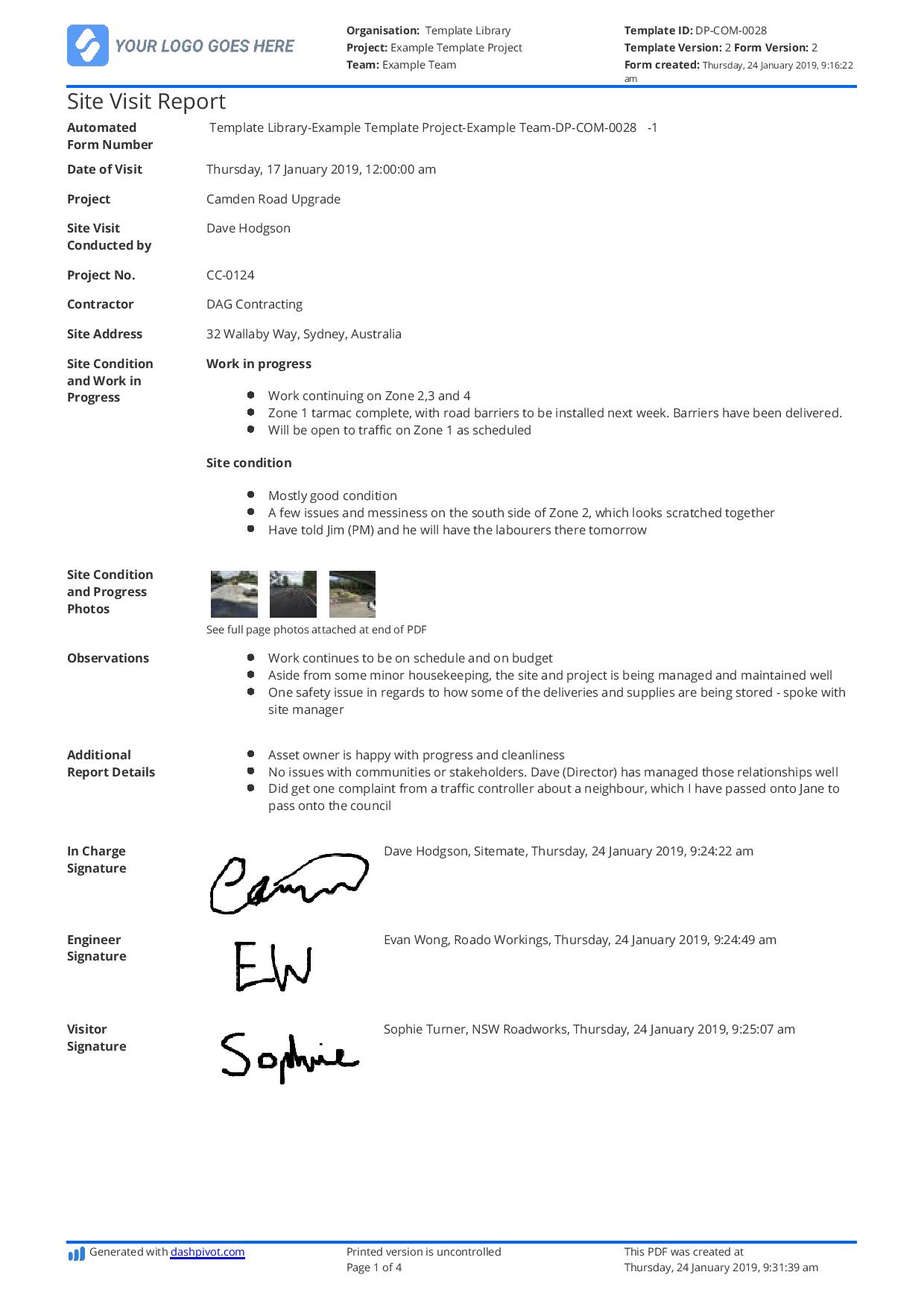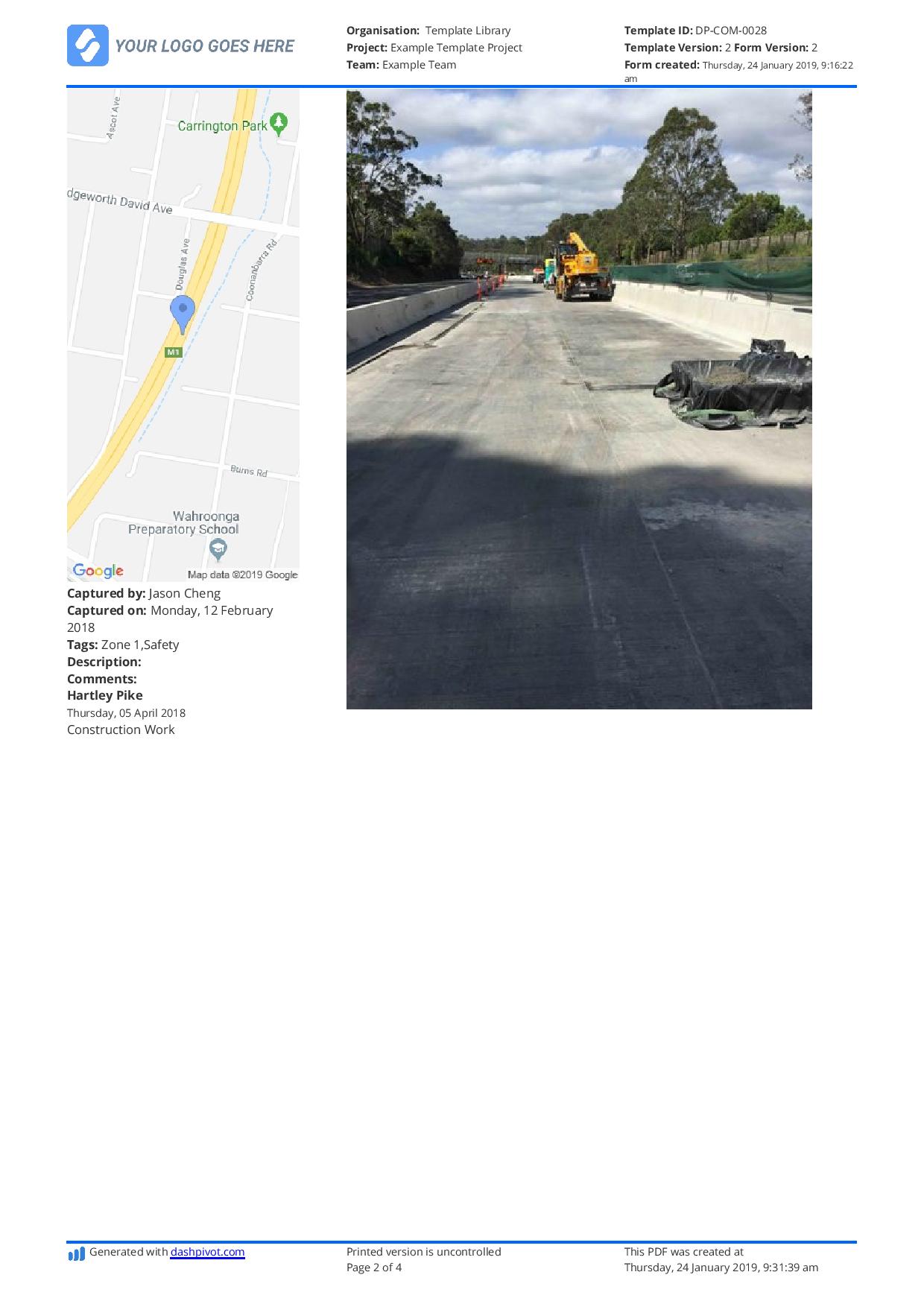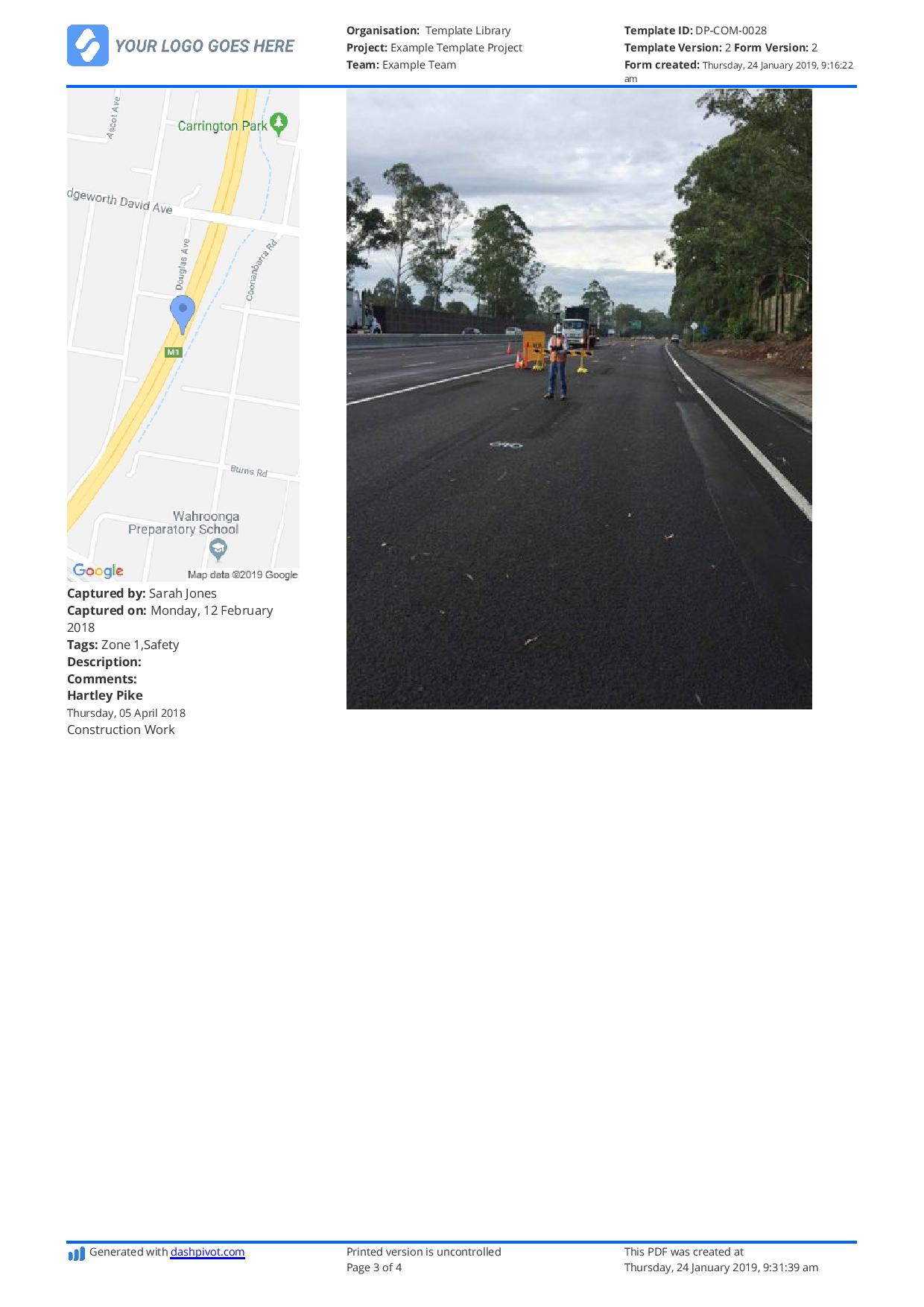Dashpivot article – Purpose of Site Visit Report

Purpose of Site Visit Report
What is the purpose of a Site Visit Report?
A site visit report serves as a crucial tool in the realm of project management, bridging the gap between on-ground realities and managerial oversight.
Its primary purpose is to document firsthand observations, activities, and conditions of a specific site at a given time, offering a snapshot of the project's progress, challenges, and accomplishments.
By detailing these insights, the report ensures transparent communication with all stakeholders, facilitating informed decision-making.
Moreover, it fosters accountability, as any deviations or issues highlighted can be promptly addressed.
Such reports also play an essential role in risk management, as they can identify potential problems early on, enabling proactive interventions.
In essence, a site visit report is a testament to the project's trajectory, fostering informed decisions, trust, and continuous improvement
What should be in your site visit report?
The primary objectives of a site visit report include:
- Documentation: The report provides an official record of observations, discussions, and activities that took place during the visit. It can be referred to in the future to track changes, decisions, or to verify certain events or conditions at the site on the specific visit date.
- Communication: The report effectively communicates the status and conditions of a project or site to stakeholders who weren't present during the visit. This can include senior management, clients, partners, or regulatory bodies.
- Accountability: By recording findings, deviations, or issues, the report holds involved parties accountable for addressing the identified concerns. Recommendations and action items specified in the report can set a path for corrective actions.
- Decision-Making: The documented observations and recommendations can inform subsequent decisions related to the project or site. This can pertain to budget adjustments, changes in project timelines, resource allocation, or any strategic shifts.
- Risk Management: The report can identify potential risks or hazards, leading to preemptive solutions or interventions before issues escalate.
- Tracking Progress: For ongoing projects, regular site visit reports offer a sequential record of progress. By comparing consecutive reports, stakeholders can gauge if the project is on track, if quality standards are maintained, and if milestones are achieved as planned.
- Quality Assurance: The report can highlight areas where quality standards are either met or lacking, ensuring that the final output meets the expected criteria.
- Legal and Regulatory Compliance: In certain industries, maintaining a detailed site visit report is a regulatory requirement. These reports can be audited or reviewed by external agencies to ensure adherence to standards, laws, or regulations.
- Feedback and Continuous Improvement: Feedback on various aspects of the project, including performance of teams, effectiveness of methods, or utility of tools and equipment, can lead to process improvements in the future.
- Building Trust: Regular, transparent, and comprehensive reports can build trust between clients, stakeholders, and the executing team, as they provide tangible evidence of commitment, progress, and challenges.
In essence, a site visit report serves as a bridge between on-ground realities and the higher-level management or decision-making entities, ensuring that all parties are well-informed and aligned.
See a completed site visit report below to see how you can tie in the purpose to the execution of the report.

Use and customise this free Site Visit Report template
Make it easy for your team to record Site Visit Reports
Use a standardised site visit report template to make it quick and easy for your team to record site visit reports on site.
All the fields and sections you need are pre-built into the report, which is also customisable specific to your project or location with the drag and drop form builder.
Add sections for photos and attach them directly to your report for easy referenceability.
Take attendance and keep track in your form with tables, with multiple sign on options with even QR code scanning signatures.
Create digital site visit report processes
Site visit reports are only useful if your team has access to them when they need it, to track project progress and record new site visits easily.
Use a site visit report app so your team can capture site visit report details on site via their mobile or tablet and sync it directly back to the office once it's submitted.
Create automated workflows to plan, conduct and sign off on site visit reports, with automatic notifications for responsible parties when the next step is ready.
Share site visit reports in a single click as professionally formatted PDF or CSV so your team, or even external 3rd parties, are always up to date.
Photos taken will have automatic timestamps, geotagging and you can add photo markup to highlight important information, defects or changes.

Site diary template
Complete and organise your daily diaries more efficiently.

Meeting Minutes template
Capture, record and organise those meeting minutes.

Progress Claim template
Streamline and automate the progress claim process to get paid faster and look more professional.

